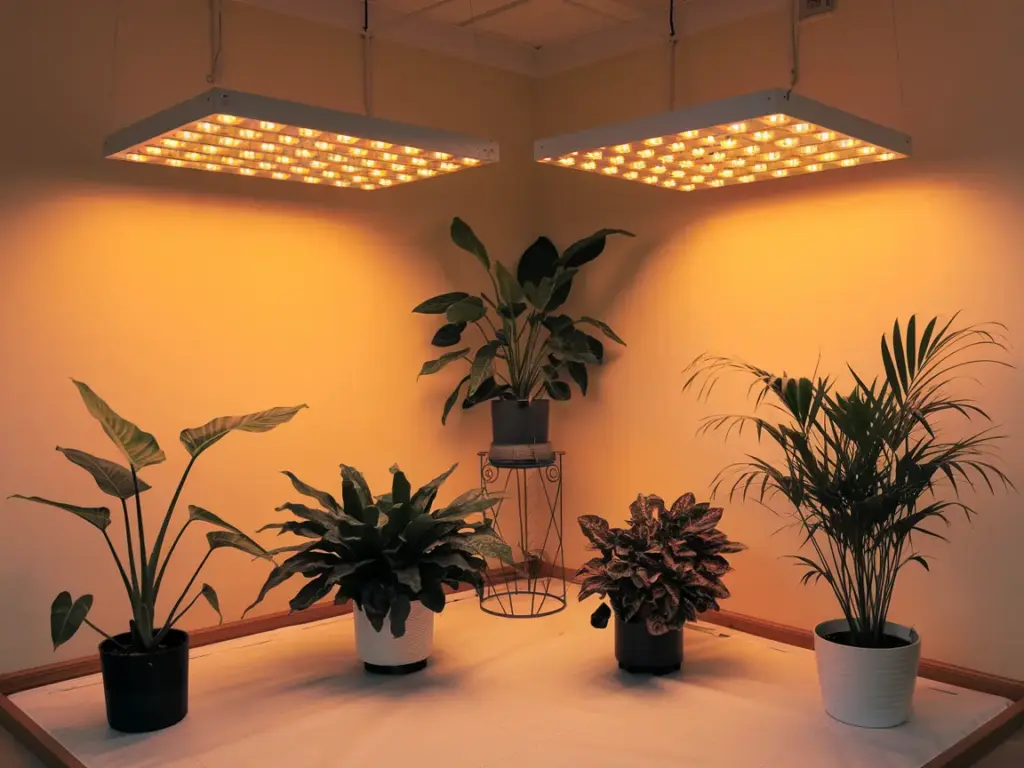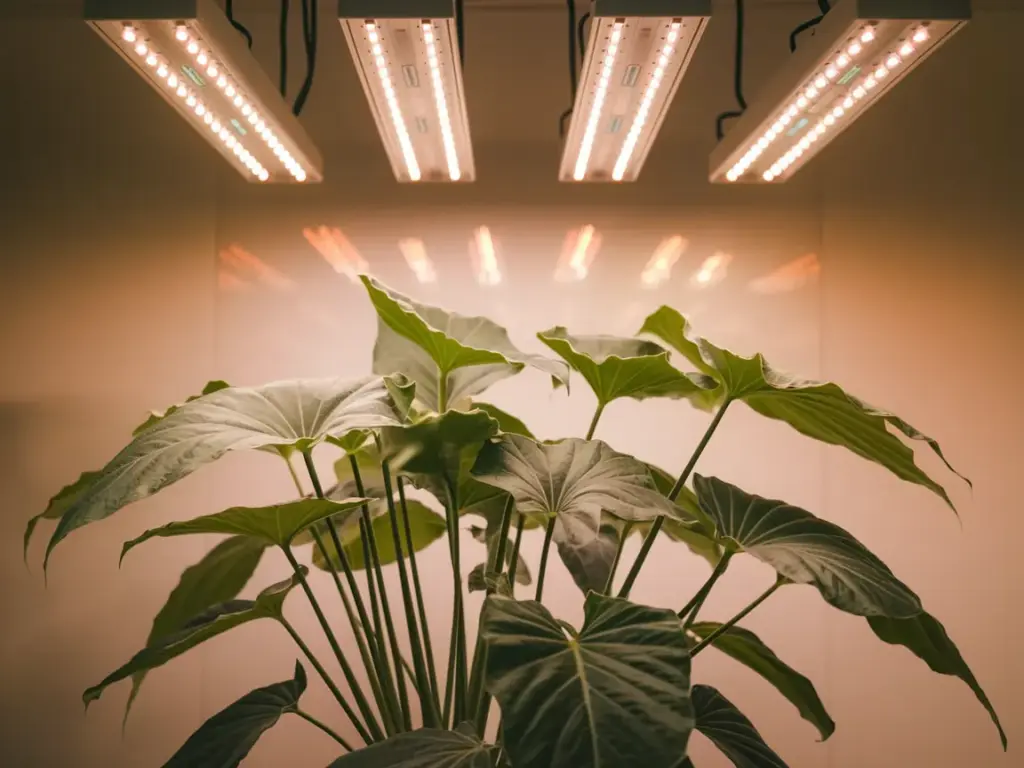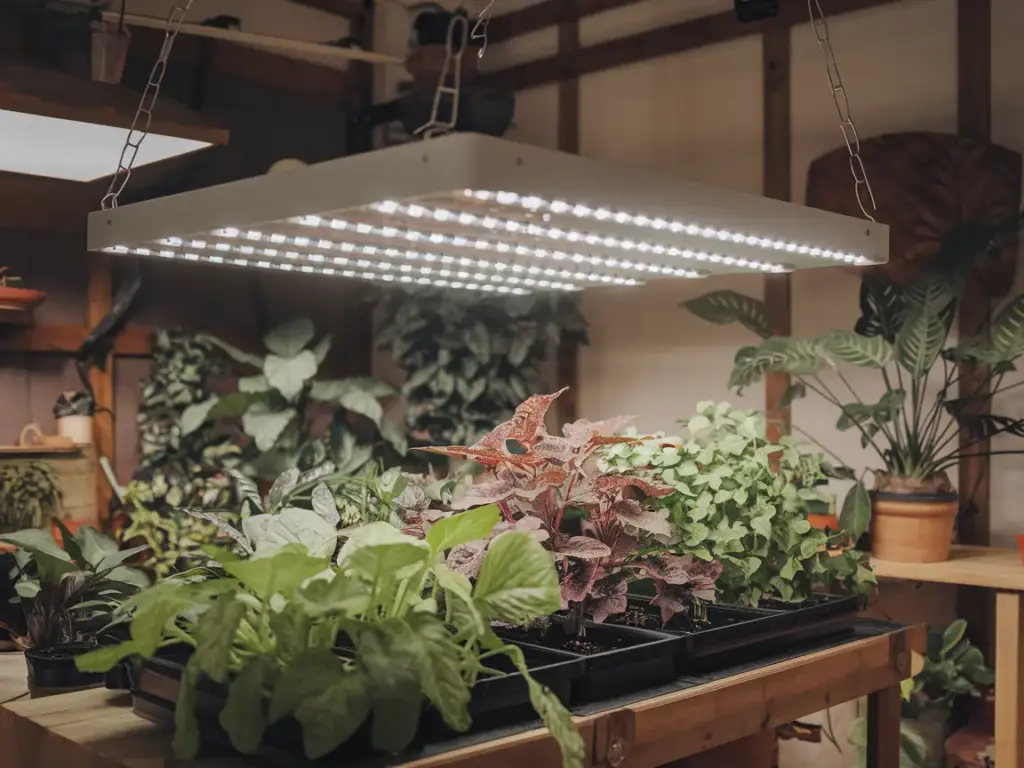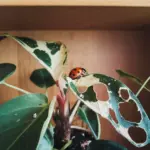LED Grow Lights: The Modern Choice

Alright, green thumbs, let’s talk about the rockstars of the grow light world – LEDs! When I first switched to LED grow lights, it felt like I’d stepped into the future. No more worrying about burning my plants or sweating over my electricity bill. It was a game-changer!
Benefits of LED Grow Lights

Let me break down why LEDs are the bee’s knees for indoor gardening:
- Energy Efficiency: These babies sip electricity like it’s a fine wine. I nearly fell off my chair when I saw my first electricity bill after switching to LEDs. It was like I’d unplugged half my house!
- Longevity: LEDs last longer than your average Hollywood marriage. I’ve had some running for years without a hiccup. It’s like the Energizer bunny of grow lights!
- Customizable Spectrum: This is where LEDs really shine (pun intended). You can fine-tune the light spectrum to match your plants’ needs. It’s like being a DJ for your plants, mixing the perfect light cocktail for each growth stage.
- Heat Management: LEDs run cooler than other lights. Trust me, your plants (and your air conditioning) will thank you.
- Compact Design: These lights are sleek and slim. No more feeling like you’re living in a sci-fi movie set!
Full-Spectrum vs. Targeted Spectrum LEDs

Now, let’s dive into the spectrum debate. It’s like choosing between a buffet and a gourmet meal.
Full-Spectrum LEDs:
These are the all-you-can-eat buffet of the LED world. They provide a wide range of light wavelengths, mimicking natural sunlight. I use these for my general growing needs, and they haven’t let me down yet.
Pros:
- Great for all growth stages
- Mimics natural sunlight
- Versatile for different plant types
Cons:
- May not be optimized for specific plant needs
Targeted Spectrum LEDs:
These are like that fancy restaurant where the chef knows exactly what you need. They focus on specific light wavelengths for particular growth stages or plant types.
Pros:
- Optimized for specific growth stages
- Can boost yields in flowering plants
- Great for specialized growing
Cons:
- May need to switch lights for different growth stages
I learned the hard way that while full-spectrum works great for most plants, some of my finicky flowers really perked up when I used targeted spectrum lights during their flowering stage. It was like they’d had a spa day!
Top LED Grow Light Brands and Models

Alright, let’s talk brands. Now, I’m not sponsored by any of these (though I wish I was, hint hint), but here are some that have worked wonders for me:
- Spider Farmer SF Series: These are my go-to for full-spectrum goodness. They’ve got great coverage and my tomatoes love them.
- HLG (Horticulture Lighting Group): A bit pricier, but man, the quality is top-notch. My peppers practically dance under these lights.
- Mars Hydro TS Series: Great bang for your buck. These are like the Honda Civic of grow lights – reliable and get the job done.
- Viparspectra P Series: These have a great balance of red and blue light. My lettuce grows so fast under these, I can practically watch it happen!
- California Lightworks SolarXtreme: On the higher end, but worth it if you’re serious about indoor growing. My orchids have never looked better.
Remember, the best light depends on your specific needs. Consider factors like your grow space, plant types, and budget when choosing.
Semantic keywords: PAR output, PPFD, light intensity, photoperiod, grow tent setup, vegetative growth, flowering stage, light penetration.
Whew! That’s a lot to absorb, right? But trust me, once you go LED, you’ll never look back. It’s like upgrading from a flip phone to a smartphone – you’ll wonder how you ever managed without it.
But hold onto your gardening hats, because we’re not done yet! In the next section, we’ll be diving into the world of fluorescent grow lights. Ever wondered if those old office lights could actually grow plants? Or why some growers swear by T5s for their seedlings? Stay tuned, because we’re about to shine some light on these burning questions!









GIPHY App Key not set. Please check settings